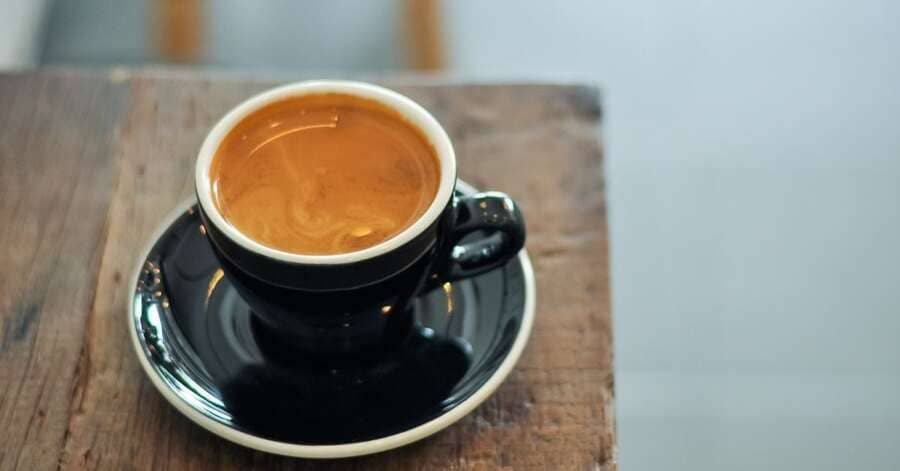
If you’re a coffee-lover, you know the struggle of that never-ending quest to find the perfect caffeinated beverage to enjoy. It’s not as simple as finding the right coffee beans, the perfect grind, or even a good machine.
In this article, I will be looking at the intricate differences between a variety of coffee drinks, including Updosed espresso, ristretto, espresso, and long-shot espresso.
What Does Updosed Espresso Mean?
Updosed Espresso is a fancy way of saying that you are using more grounds in ratio to the water. For example, if you regularly use 18 grams of your espresso to brew a shot, you might use 20 grams of grounds to make an Updosed espresso shot.
There are a number of reasons to do this, one of which is the roast of your blend.
A gram of dark roast coffee beans will take up more space than a gram of light roast coffee beans, so it may be preferable to Updose when using a light roast grind to get an even extraction and improve the function of your machine.
Though the basics are simple, there’s a lot more to learn about Updosing and espresso which I will cover in detail below.
Ristretto vs Updosed Espresso
While similar to an Updosed shot of espresso, a ristretto shot is actually a short pull espresso shot that uses less water, resulting in a shot with concentrated flavor and a sweeter taste.
The caffeine content of the drinks is roughly equivalent, though Ristretto may lose a negligible amount of caffeine due to the unique preparation technique.
The biggest difference between the two preparations is in their history.
The official origin of the Updosed espresso shot is unclear, but it rose to popularity in specialty brewing circles and cafes between 2009 and 2010. At the time, the majority of espressos available in America were dark roasts that lacked the robusta found in Italian espresso blends that curb the bitterness.
The Updosing method was introduced as a way to compensate for the shift from dark roast espressos which offered a bitter toasted flavor, to the newly popular light roast espressos that were introduced to eliminate the overt bitterness and toastiness.
These lighter roasts also offered a smoother shot with a variety of subtle flavors.
Due to the variance between light and dark roasts we mentioned earlier, a method needed to be developed to compensate a full-bodied shot of equivalent strength.
Ristretto history
The origins of Ristretto are much clearer, the term ristretto comes from Italy and means restricted or condensed, a perfect way to describe the shorter pull used to create a ristretto shot.
The term and its method were brought to American audiences in the early 1990s by David Schomer at Espresso Vivace in Seattle.
Mr. Schomer described ristretto as preserving the fragrance of the roast, caramelizing sugars through the brewing process, and offering a silky mouth-feel, which he achieved by using no more than an ounce of water per single shot brewing 20 grams of coffee.
Ristretto vs espresso
Ristretto and Espresso are extremely similar, after all, Ristretto is just an espresso shot made with a short pull.
They use the same ratio of water and coffee grounds, the difference between them is the total extraction time, which is between 8 and 10 seconds less for a ristretto versus a traditional shot of espresso.
The only other difference is the taste, with ristretto having a signature sweeter taste. Even the histories of espresso and ristretto are very similar, with both claiming Italian origins.
Espresso predates Ristretto and became a drink synonymous with the urbanization of Italy, steadily rising in popularity after the invention of the first espresso machine by Angelo Moriondo in 1884 (Source).
This machine and the resulting espresso are quite dissimilar from what we know in modern times, largely due to the fact that the machine brewed the beverage in bulk, rather than individual servings, which likely affected the consistency as well as the taste.
The longer brew time required for a bulk batch of espresso would likely result in a much more bitter acrid taste.
Is ristretto stronger than espresso?
While the flavor profile of ristretto is stronger and sweeter than that of espresso, the difference in caffeine content is negligible.
A standard shot of espresso may have a slightly higher amount of caffeine than ristretto due to the potential loss of caffeine in the brewing process, but the difference is not enough to measure and would vary from brew to brew.
Ristretto vs long shot
A Long Shot is basically the inverse of a Ristretto. While a ristretto uses a shorter pull and in some cases, a lower ratio of water, a long shot uses double the water of a standard espresso shot and a much longer extraction period, nearly twice the time, even more, when compared to Ristretto.
The most noticeable differences between a ristretto and a long shot are the flavor and the amount of coffee (Not caffeine) you’ll get with each.
Due to the extra water used to brew a long shot, you’ll get more than double the liquid. As a result of the longer exposure, a long shot has none of the sweetness found with ristretto and may even be quite bitter as it is easy to over-brew.
The long-shot is another drink that comes from Italy, getting its name from the Italian word lungo, which translates to long. As opposed to corto, which translates to short.
In Italy, a long shot is ordered as a caffè lungo, whereas in France you’d ask for a café allongé. The history of the beverage isn’t clear, but it’s believed to have come into popularity shortly after the original espresso shot.
The Bottom Line
Espresso can be prepared in so many different ways, resulting in a variety of unique but equally delicious drinks.
Whether you prefer the syrupy sweetness of updosed espresso or the slight bitterness of a long shot, you really can’t go wrong.
The quest for the perfect cup also requires finding the right brewing method, or methods for that matter. Depending on how much brewing experience you have, you might know this leaves you with a lot of options with a wide variety of flavors and textures.
Each of these drinks has its own unique flavors and brewing processes, and they can be enjoyed on their own or used as a base for a variety of other drinks such as lattes, macchiatos, and more.
If you’d like to find some new coffee drinks to enjoy, or just to learn more about the variety of drinks available, check out our different coffee-related articles!
And If you enjoyed learning about the different types of espresso drinks, share this article on social media to spread the knowledge.
